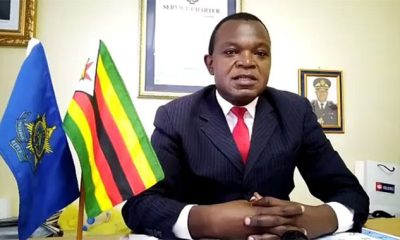- Chinese lithium miners have in the past two years invested over R19 billion in setting up in Zimbabwe.
- A court dispute blocks a Chinese lithium miner from processing lithium ore worth R285 million.
- All mines registered after 2003 could be deemed illegal if a controversial High Court judgment is upheld.
A protracted lithium mining dispute between Chinese investors and a Zimbabwean government-owned corporation has led to a contentious High Court verdict that could result in the termination of mining licenses issued after 2003.
The case has also drawn attention to the risks associated with investing in the lucrative mining industry, particularly the recent lithium rush in the country.
Last year, Zimbabwe earned R3.9 billion from lithium exports in the first nine months alone. The mineral is poised to become the country’s third-largest mineral export after gold and platinum-group metals.
Chinese firms have spent up to R19 billion in the past two years to acquire and develop lithium projects in Zimbabwe.
Some of the big players are Zhejiang Huayou Cobalt, Sinomine Resource Group, Chengxin Lithium, Yahua Group, and Canmax Technologies.
But it is the little-known Avoseh Investments which is at loggerheads with state-owned Sandawana Mines.
Sandawana is owned by the government through the Kuvimba mining house.
Avoseh and Sandawana are locked in battle over a lithium mining claim, which the latter alleges to be in its jurisdiction.
READ | AI-powered mining firm linked to Gates, Bezos claims huge copper find in Zambia
The dispute arose after Sandawana was granted first rights to prospect in an area registered in 1964 as the property of Rio Tinto, a British-Australian multinational company, now the world’s second-largest metals and mining corporation.
Private players were invited after Sandawana pegged a 3 800-hectare area.
Avoseh then arrived and pegged its 24 blocks, which it registered in November 2022. The Chinese firm went on to mine and now sits on lithium ore that is, according to court papers, worth R285 million.
But Sandawana got a court interdict for the ore not to be moved to a processing plant because it was allegedly illegally mined from the area, it claims.
Sandawana sought and received a ruling that Avoseh was improperly given rights to carry out mining activities.
In her ruling, Justice Lucy Mungwari sitting in the High Court in Harare said Avoseh’s mining claim was null and void because it had received a mining permit before getting an environmental impact assessment certificate (EIAC).
ALSO READ | OPINION: Pressure mounts for mining to produce sustainably. But can it do so profitably?
Section 97 of the EMA Act requires applicants for mining permits to first acquire an EIAC before a mining licence, since 2003, according to Justice Mungwari.
As such, it “is not disputed that Avoseh’s claim was registered in the absence of the EIAC. It obtained mining title in the absence of the said certificate. An EIAC issued by EMA is a condition precedent to any mineral prospecting, mineral mining, ore processing and concentrating among other kindred mining operations”, she said.
In her ruling, Mungwari added:
It is wrong for anyone to assume that the EIAC is not a necessary or indispensable requirement for the grant of a prospecting licence or indeed a mining licence.
Since Sandawana took over from Rio Tinto, the judge said, it had not been affected by the new requirements.
But Avoseh – and any other mining entities in Zimbabwe that received their licences in a similar fashion since 2003 – have been mining illegally.
Avoseh is appealing against this ruling.
However, if the ruling stands, it implies that all mines registered in Zimbabwe after 2003 were illegally operating.
Avoseh’s lawyer, Professor Lovemore Madhuku, claimed that the court needed to distinguish between the implementation and execution of mining operations on the one hand and the legality of a title on the other.
READ MORE | Mozambique wants to end Cahora Bassa deal with Eskom, threatening SA power supply
“A mining title is valid without reference to the EIAC. It is the carrying out of the operations that ought to be held in abeyance until the EIAC is acquired,” he said.
Madhuku argued that one can get a licence, but cannot go ahead and mine without the EIAC.
He also argued that there was no way anyone could get an EIAC of an area that they don’t have rights to. Therefore, it was impossible for Avoseh or any other firm, to have an EIAC before having rights to a piece of land.
Sandawana took this route after it failed to prove in court that Avoseh encroached into its area.
The News24 Africa Desk is supported by the Hanns Seidel Foundation. The stories produced through the Africa Desk and the opinions and statements that may be contained herein do not reflect those of the Hanns Seidel Foundation.

 Business5 months ago
Business5 months ago
 music2 weeks ago
music2 weeks ago
 travel3 weeks ago
travel3 weeks ago
 money markets2 weeks ago
money markets2 weeks ago
 gospel2 weeks ago
gospel2 weeks ago
 gospel2 weeks ago
gospel2 weeks ago
 gospel2 weeks ago
gospel2 weeks ago





You must be logged in to post a comment Login